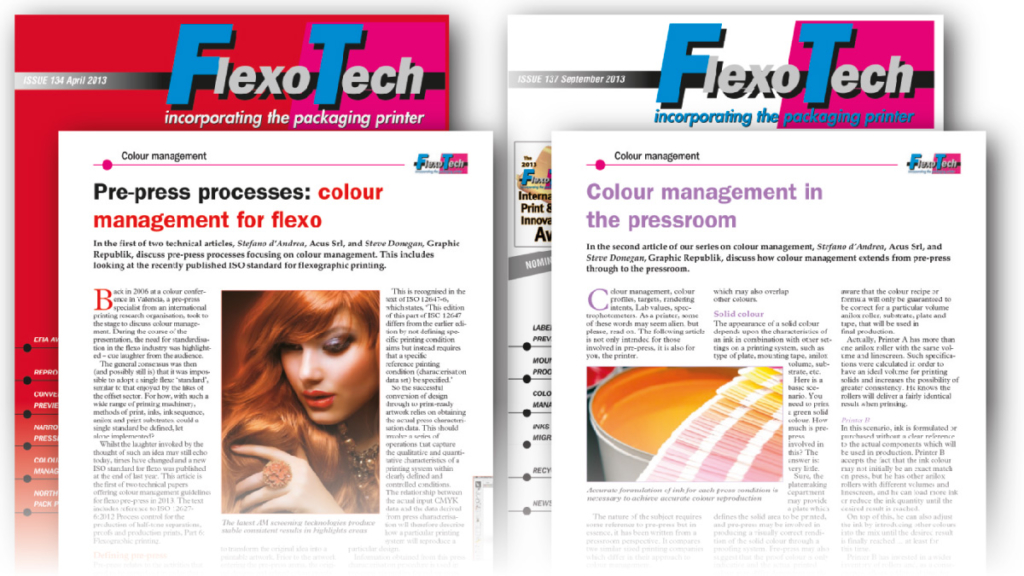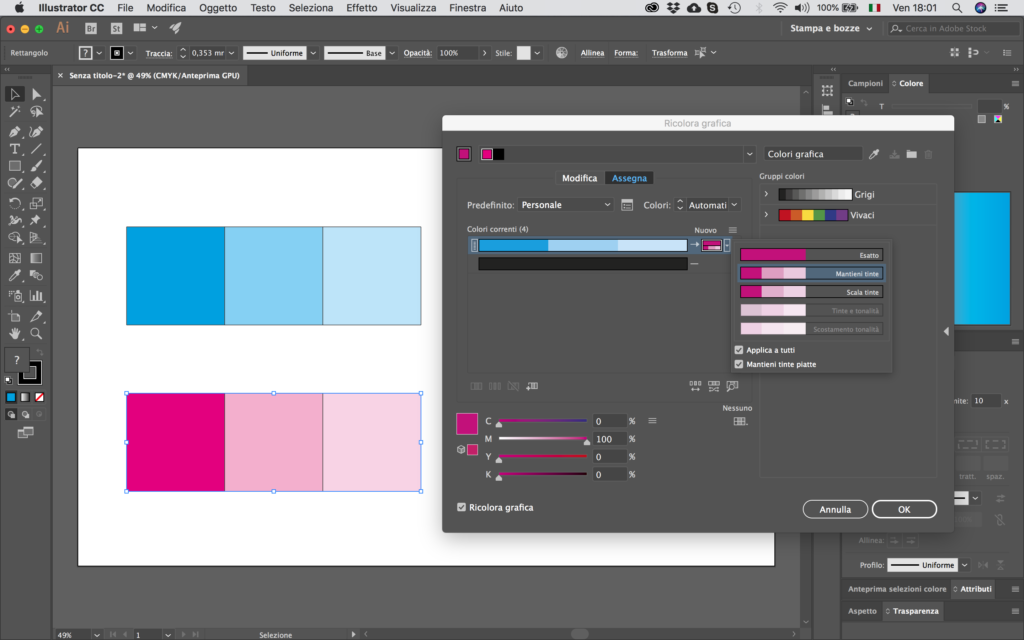The register between colors is a fundamental aspect for the quality of the printed product. But what is the correct register tolerance and how to evaluate it?
ISO 12647-6 connects the register tolerance to the print linescreen. The higher the linescreen, the greater the expected accuracy on the printed product. According to this norm, register tolerance shall be within 2÷linescreen, and it should be within 1÷linescreen. For example: at 120 lpi (48 l/cm) it shall be ≤ 420 µm and it should be ≤ 210 µm.
Atif Doc04, Check-Up procedure for flexographic presses (Rev. 04-2013), suggests different levels of acceptability: good if ≤ 50 µm, sufficient if ≤ 100 µm, insufficient if > 100 µm.
How would you evaluate it? With a microscope, featuring sufficiently accurate measurement capabilities, the register is measured by checking some printed samples that are representative of a print run for the printing condition under examination (different substrates could produce different register values).
In any case, the register tolerance is a characteristic of the printing system that must be assessed and managed: a 100 µm register cannot be requested from a printing system that has 500 µm accuracy. The register tolerance must therefore be assessed during the system check-up and fingerprint operations and shall be shared and agreed between all parties involved in production workflow: printers can keep their production under control, prepress has precious information about necessary trap values and customer can have better and clear expectations of the final result.



I think, register tolerance is rather result of printer capabilities and experience then machine capability. It’s one to give an perfect register sample, and it’s other thing to maintain this register during the run. Of course the new presses have more tools to keep the register: chiller, automatic registration, servo motors etc., but register process is starting with the plate making (pletes must have same direction wile exposed), plates mounting procedures(sticki-back, presure, way of mounting), machine setup(indeed tension, plate cylinder pressure, nips presures, even ambient temperature snd humidity is in the game. So wat I want to say – to manny variables are influencing the register tolerance mesurement process. Its more simple and exact to make a statistic and based on statistics results to agree the printing tolerance of the press.
Hello Dmitri and thank you for your comment.
Yes, the statistical approach is definitely the right way to do.
Sono d’accordo sul fatto che molti fattori influenzano il registro. Ci sono molte variabili che si potrebbero aggiungere a quelle indicate (spessore del biadesivo più o meno comprimibile, qualità dei materiali stampati mi riferisco alla plenarita’ o assenza di randa….., ). Comunque non credo sia giusto impostare il discorso sulla percentuale di tolleranza del registro. Lo si può anche stabilire con valori assoluti ma, qualsiasi stampatore sa benissimo che il registro varia continuamente durante la tiratura è, ogni piccola variazione, influisce in maniera più o meno evidente, sul risultato di stampa (per esempio nelle quadricromie). Credo sia più opportuno aiutare il cliente (e gli studi grafici) a capire che un materiale flessibile avvolto su un tamburo che viene riscaldato, raffreddato…… non è un pezzo di acciaio che viene lavorato con tolleranze millesimi. Alla fine, quello che interessa al cliente è il risultato finale che deve essere accattivante e coinvolgere il consumatore finale.
Caro Paolo grazie per il commento. Tuttavia il post non tratta dei motivi che causano il fuori registro, bensì della tolleranza attesa per questo difetto.